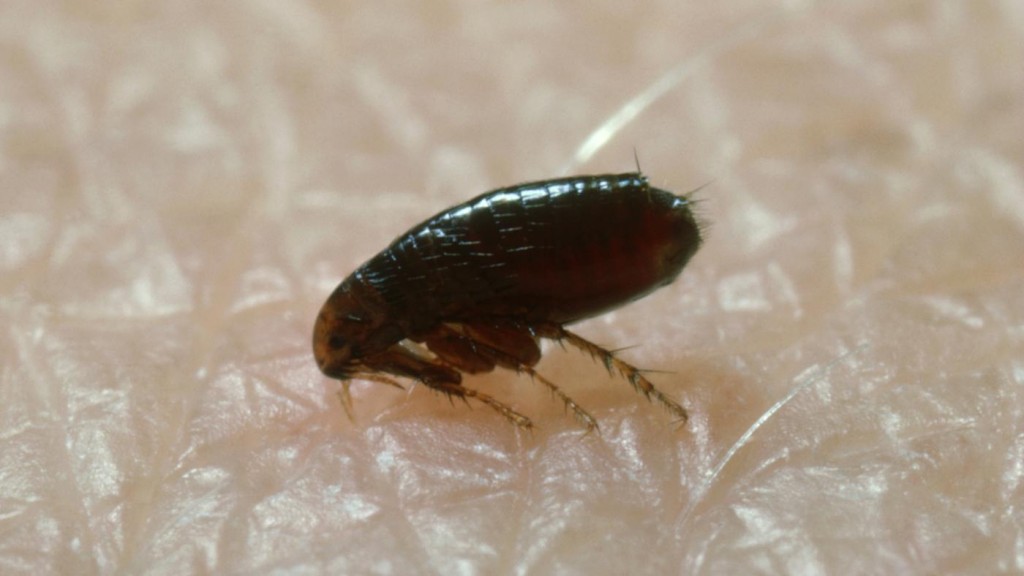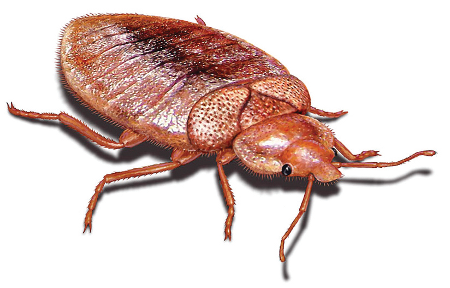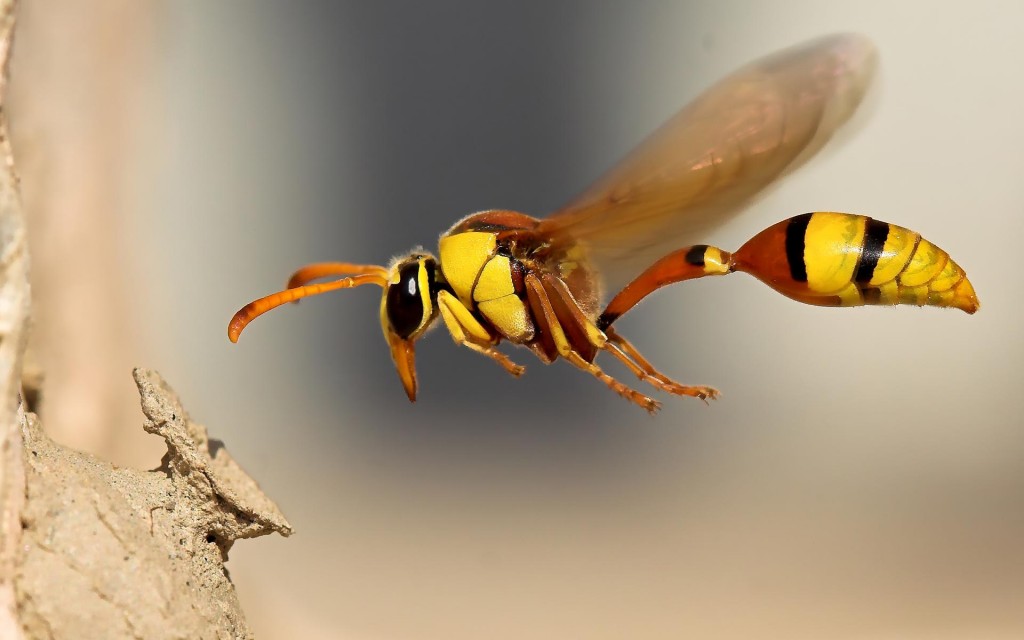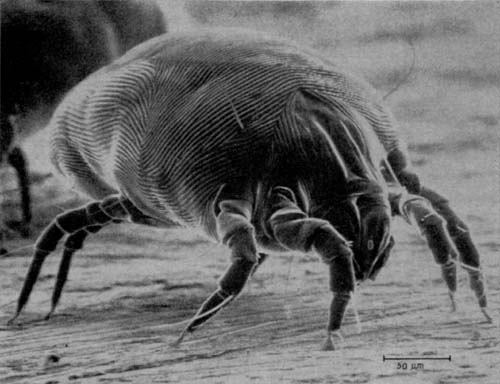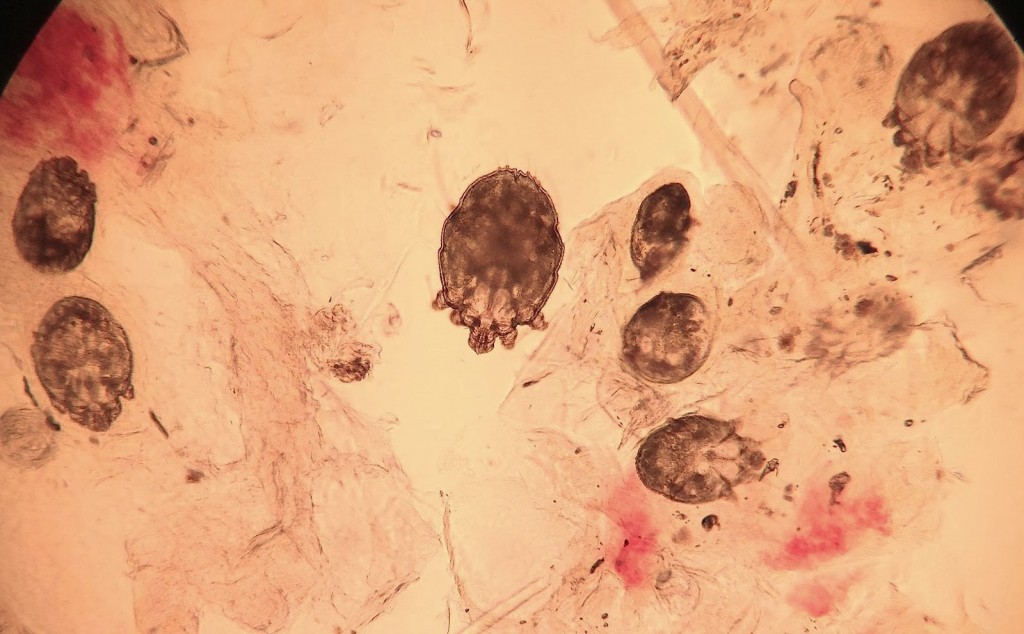Residential Pest Control Sydney




Pest Control Services for Sydney Homes and Strata Apartments
Masters Pest Control Sydney is a team of licensed professionals with over 40 years of combined experience in the industry. Our pest exterminators can handle all common pests found in Australian homes. Hire our home pest control team to remove termites, cockroaches, rodents or mice, and other common pests.
For any residential pest control services in Sydney, trust only the masters! Call (02) 8007 4666 for a FREE QUOTE. Schedule a building and pest inspection today!
Tell us your pest problem
FREE QUOTE
Our Proven Home Pest Control Strategy
Our professional pest control services apply the Integrated Pest Management (IPM) approach, which involves the ff.:
-
Examination - This involves thoroughly inspecting the property.
-
Documentation - For full compliance and documentation, especially in commercial establishments.
-
Education - Getting the support of the property owner is crucial when it comes to removing pests. We'll sit down with you to discuss how we can help each other remove pests on your property.
-
Finding the best control method - This involves determining the right pest control solution.
-
Area control - This involves removing areas where wasps may make their nests and sealing any entry points to your home.
-
Sanitation - This involves removing sources of food and water for wasps.


We're located in multiple locations throughout Sydney to provide the best pest control service for Sydney homes. Call (02) 8007 4666 to book an on-site inspection!
Trusted Home Pest Exterminators in Sydney
Eco-friendly and Safe Residential Pest Control
We are dedicated to providing eco-friendly pest control solutions that are guaranteed safe for pets and children. We are HACCP certified and regularly spray leading childcare centres, hospitals and schools around Sydney.
Every case of a pest infestation is different. There is no one chemical or pest control product that can magically solve a pest problem. That’s why we use the Integrated Pest Control Management (IPM), which allows us to solve any pest problem without using harmful chemicals. Our pest control experts inspect, study and determine the right strategy to eliminate any pest infestations.
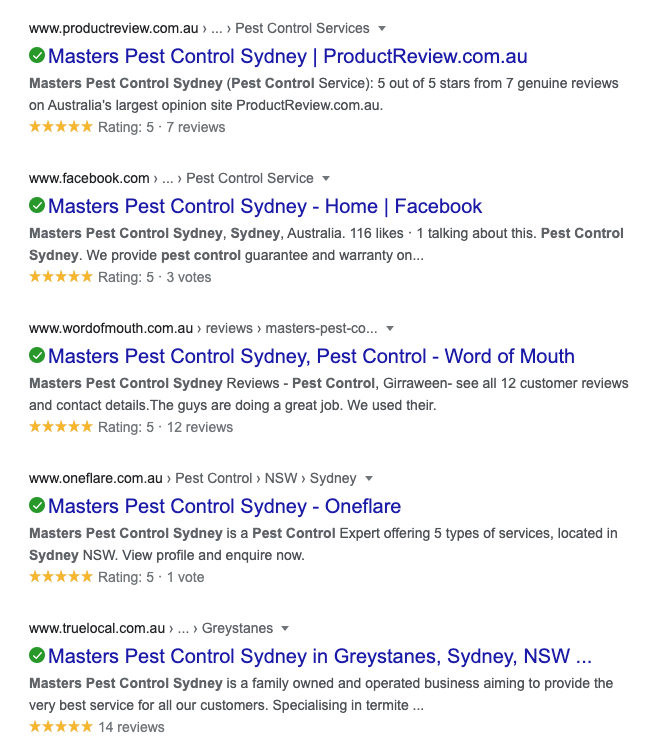

Trusted for over 40 years as the #1 pest control company in Sydney. We have multiple locations in Sydney to provide fast and effective pest control solutions to Sydney homes.
Why should you book a pest control service?
Pest Management for Sydney Residents
Here are common remedies that you can apply in your home. Although these may temporarily work, most DIY remedies are not proven to completely remove pests from your property. We still recommend that you book our professional exterminators to keep your house safe from any type of pest infestations.
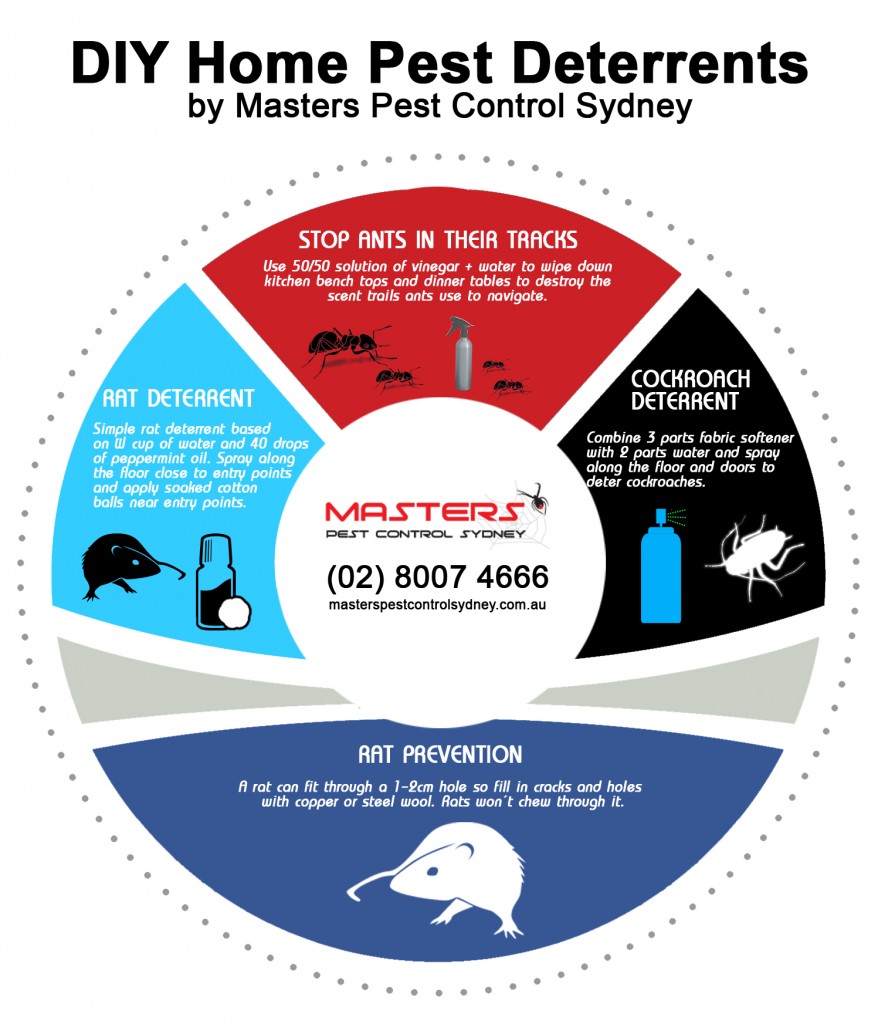

Cockroach Pest Control
There is a reason why we are terrified of cockroaches. Roaches invade our homes, hiding in the shadows and residing in nooks and crannies. They represent the filth that we try to avoid, spreading their waste and even diseases as they scamper around our homes.
Blatella germanica, also known as the German cockroach, is probably the most familiar cockroach to most Australians. It is also one of the most resilient. This species of cockroach love heat and humidity and has great adaptability to residential homes all over Australia. Because they are usually active at night and prefer to hide in cramped spaces, they can be a stuff of nightmares, even for experienced pest controllers.
Eliminate your German cockroach pest control nightmares today. Masters Pest Control is the trusted cockroach pest control provider. Using affordable and eco-friendly solutions, our professional exterminators can eradicate your cockroach problem. Call us on (02) 8007 4666 to request a FREE quote and schedule a pest inspection.
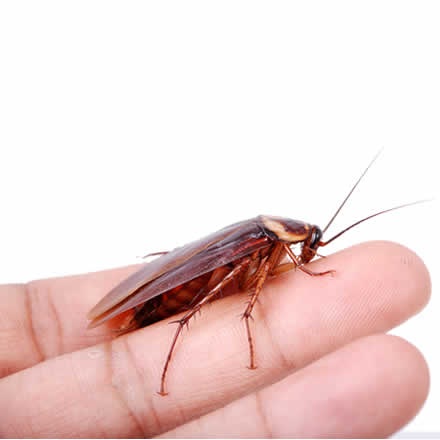

Get rid of cockroaches in your home.
German cockroaches can be resistant to common anti-cockroach products being sold.
Gel baits, traps and chemical pesticides are some of the most common pest control methods available to homeowners. They can be effective when dealing with other pests, but these methods may not be as powerful when it comes to German cockroaches. Because of their fast reproduction, this species can develop resistance to ordinary pest control methods. Some studies even found that German cockroaches tend to avoid baits treated with sugary chemicals, developing resistance that exceeded ordinary pest management threshold.
German cockroach secretions can affect your food.
This species of cockroach produce odour secretions when threatened. A large enough population of German cockroaches can produce a distinct musty smell. Aside from these secretions, this species also produce small, dark and pepper-like droppings. Now imagine these pests scampering on your plates and food at night.
German cockroaches spread diseases and allergic reactions.
German cockroaches are known to carry disease-causing germs, bacteria and viruses. Residents of a German cockroach-infested home may experience stomach problems like diarrhea and dysentery. These species are also known to carry salmonella. Their droppings can also cause allergies and breathing problems.
German cockroaches may damage books and important documents.
German cockroaches will eat books, book bindings, documents, and even your wallpaper in the absence of readily available food. It may not be as damaging as termites, but they could cause significant destruction by feeding on your documents.
German cockroaches will bite humans.
For heavy German cockroach populations where food sources may not be enough, they have been found to bite on sleeping humans and eat food residue that may have remained on their faces. This usually happens in extremely heavy infestations, and available food sources cannot support the population. German cockroach bites can cause irritation, swelling and lesions, and wounds that lead to an infection.
Common Facts About Cockroaches
Blatella germanica, commonly known as the German cockroach, is one of the most common and most hated pests in residential and commercial properties all over Australia. They may be a small cockroach species, growing at just 1.1 cm to 1.6 cm, but their adaptability to their environment and health risks can pose a big threat to your home.
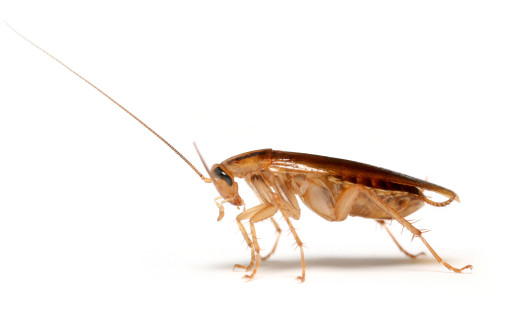

Common facts about German cockroaches
German cockroaches love a humid environment, and they are usually found in restaurants, food processing facilities and your kitchen. They are mostly active at night, and you can usually see them when you bring light to a darkened room where they are scavenging for food. To know more about these pesky critters, here are some facts that you need to know about German cockroaches.
-
German cockroaches can barely fly. Unlike its other cockroach cousins, the German cockroach barely flies even if it has fully developed wings. They prefer to crawl across surfaces instead, spreading germs all over your home.
-
German cockroaches have a fast rate of reproduction. An adult female German cockroach can produce four to eight egg capsules called ootheca. Each ootheca contains up to 48 eggs and takes around 28 days to hatch. A single female can theoretically produce more than 10,000 descendants over one year.
-
German cockroaches undergo the shortest time to reach maturity. The species has three stages of metamorphosis: egg, nymph and adult. The entire life cycle is completed in about 100 days. Multiple generations can be present at one time, and their population growth is exponential.
-
German cockroaches can carry disease-producing organisms. As they scamper around your home, German cockroaches can transmit different germs and viruses, including those that cause food poisoning, diarrhea and other forms of gastroenteritis. The waste they produce can also cause different allergic reactions, irritate eyes and can trigger asthma attacks. (Read: Why should you book a building and pest inspection in Sydney?)
-
German cockroaches love the heat and humid places. If you want to inspect your rooms for a German cockroach infestation, check your refrigerators and other appliances that generate heat. You should also check the area under your sink, your toilet bowl and around water pipes.
-
German cockroaches are resistant to common over-the-counter pest control methods. Different factors contribute to this species’ resilience to pest control methods available to regular consumers. Their short reproductive cycle, fast sexual maturity and resistance to pesticides have made them one of the most difficult pests to eradicate.
-
You can eliminate these pests with professional German cockroach pest control. When you notice the tell-tale signs of an infestation, the best step to take is to call professional German cockroach pest control service providers. As this pest species can be resilient, you will need a more elaborate and effective process to eliminate them from your home.
Remove Pests Commonly Found in Residential Areas
Fleas
Even households without pets are not safe from these little blood-suckers. Aside from being parasites of cats and dogs, fleas feast on human blood as well. So we make sure that they won't come back and hide in nooks and crannies and other places in your home. Would you please not hesitate to inquire about our flea extermination programs ASAP?
Bed Bugs
While you await a professional exterminator to perform a full bed bug treatment of your home, you can prepare a few things before they come over. At Masters Pest Control Sydney, we suggest starting by cleaning the areas of your bedroom. Then, use a vacuum to clear up baseboards, bed stands, headboards, mattresses, pillowcases, carpets and rugs.
Next, move to your living room and other areas where upholstery such as couches, chaises and ottomans can be found. Bed bugs also love to nestle in soft furnishings such as throw pillows and curtains. After meticulously vacuuming every nook and cranny, make sure to scrub surfaces with a hard brush to get rid of eggs.
As for bed linens and clothes that have been infested, throw them in the washing machine immediately. Take note that these should be laundered in hot water to kill bed bugs that might still be clinging to the fabric. Alternatively, you can heat bedding and garments for a couple of minutes in a tumble dryer.
Uncover Their Hiding Areas
One way to do this is to reduce clutter as much as you can. Gather all personal belongings and take them out. This can be anything from gadgets and devices, books and accessories, as well as stuffed toys. Be careful when packing up these items, though. Ensure to seal them off to reduce the possibility of bed bugs travelling to other rooms in your house.
To further expose the secret places bed bugs thrive, pull out drawers from desks and dressers. And when we say pull them out, we mean remove them completely. You should also disassemble bed frames. Lastly, make sure all your furniture is moved away and is not touching the walls.
Wasps
Wasps are generally considered a dangerous pest because they sting and can cause an allergic reaction to some. That's why we recommend that you don't touch a wasp nest and wait for professional pest exterminators to handle the pest infestation for you.
Wasps and bees may be quite similar but the pest control strategies for these pests are quite different. Bees are an endangered species, and their nests should not be removed immediately unless they pose a valid threat. Wasp pest control, on the other hand, is more straightforward. To learn more about how to remove these bugs from your property, talk to our team today!
General Information about Wasps
Wasp (Latin Vespidae) is an insect from the order of Hymenoptera. The female wasps raise their young by laying eggs on or in the larvae of other insects. The wasp larvae kill the host larvae and eat them.
There are tens of thousands of species, and they have spread to all parts of the world. They are usually around 10 to 15 mm in length. Some species can grow much more, like the Asian giant hornet, which can grow up to 5 centimetres in length. The smallest species of wasps are Trichogrammatidae which are just 0.2 mm in length.
While hundreds of species of wasps bees worldwide, only a small number of them can be found in Australia. By understanding their habits and lifecycle, you can better identify the wasp species on your property. The most common wasp species in Australia are specified here:
-
European and English Wasp — Known for causing painful stings, these two wasp species are commonly found in New South Wales, Victoria, and Tasmania. They build nests in sheltered locations. Their body is yellow and black, but their markings can vary depending on the species. They can grow from 12 to 17 mm. They feed on insects and sweets. Their colony can grow up to 25 000 individual wasps. The wasp queen only survives over winter. The entire nest dies during winter, and that includes all the males and females.
-
Yellowjackets (social wasp) — The worker wasp is around 15 mm in length, while the queen wasp is a little bigger. They have alternating black and yellow bands on their body and two pairs of wings. They feed on insects, but they can also eat food that humans consume. Yellowjackets can repeatedly sting if they are provoked. Their nests are found in trees, bushes, attics, wall cavities, floors, sheds and similar buildings.
How Wasps Build Their Nests
Unlike honey bees, wasps build their nests by collecting papery abodes from fibre wood, which they chew into a pulp. Wasps prey on many species to survive, either for food or for their parasitic larvae.
Types of Wasps
Wasps are one of the most diverse insects, with more than 30,000 types of species in the world. However, they are subcategorised into two groups: social and solitary wasps. Social wasps include more than a thousand species, including yellow-jackets and hornets. Social wasps start their colonies from scratch. The colony is started by a queen wasp that has been fertilized at least a year before, surviving winter hibernation in the process.
The queen is responsible for starting a small nest and rearing worker females to expand the nest further. By the time it's summer, the colony has more than 5,000 wasps (including the queen) that slowly die by the time it's winter. The process then restarts, with newly fertilized queens starting colonies from scratch. Solitary wasps do not form colonies but are oddly the largest subgroup. This subgroup contains some of the largest wasps like cicada killers and blue and orange tarantula hawks. These wasps can grow up to 1.5 inches. The most apparent difference between the two subgroups is that social wasps use their stingers to defend themselves. Still, solitary wasps use the venom in their stingers to prey on other species.
Wasps and Stinging
Unlike honey bees, wasps can repeatedly sting when provoked. They always attack in a group, never alone. However, wasps only attack if they get disturbed or their nest is attacked. The male wasp does not have a stinger. Only the female does. The female wasp's stinger evolves to help them hunt and lay eggs.
Wasps and the Ecosystem
While wasps are dangerous, they are also useful in removing other pests. This is because they feed on almost all species in the world. From ants to cockroaches, they prey on various insects. This makes them helpful to some farmers. However, it's important to note that these types of wasps are trained properly by farmers, and the ones that build colonies near homes are dangerous.
The venom in a wasp's stinger does not cause serious problems, but sensitive individuals can develop an allergy. In addition, since the stinger does not fall off, repeated stings can lead to severe reactions. If you see a wasp nest near your home, do not panic. Do not approach the nest by yourself. Leave everything to a professional pest control service.
A pest control service can tactfully remove the nest without causing wasps to attack and invade your home. They have the skills and tools to take care of the problem carefully. Masters Pest Control Sydney is a pest control service that uses effective tools and products to remove wasp nests from your home without any problems. Furthermore, the products used by their specialists for treatments are child and pet-friendly.
Dust Mites
Dust mites are one of the pests that are commonly found wherever human is. These pests are usually associated with dust and debris that can be found inside homes. Hence, these mites live and reproduce in areas with a lot of dust.
Dust mites can survive in different living conditions, even in a dry climate, but they normally prefer to live in humid indoor areas such as the kitchen or bedroom. The complete life cycle of dust mites, from egg to a full adult stage, lasts around 30 days. Throughout their lives, dust mites go through five different stages: egg, larval stage, two nymphal stages and the adult stage. Adult dust mites can live as long as two months, depending on their surroundings' humidity and temperature.
Pest harmful to human's health
It sounds as if they are beneficial for our lives since their foods normally shed human skin or hair cells. However, they thrive in mattresses, carpets, cushions, draperies, pillows, bedding and under furniture and their population is pretty dense with a range of around 190 miles per 1 gram of dust. Even though they eat human skins, they also cause allergies as humans tend to react to various proteins in their droppings. These droppings will continue to cause allergic symptoms even if the mites are dead.
The allergy to dust mites is widespread in Australia, where the allergen is present in large quantities. Several dust-mite removal techniques can be used to reduce dust mites, such as removing all the dust in your home, but neither one does the job of completely removing it. In addition, some of the methods that are often used to decrease the number of mites and their allergens are costly, with limited evidence of their effectiveness.
-
burning and reddened skin
-
mouth, tongue or throat swelling
-
swallowing and breathing difficulties
-
nausea and abdominal cramps, increased heart rate
-
chest pain or tightness
-
noisy breathing
-
strange metallic mouth taste
-
unconsciousness
Skin Infections and Allergic Reactions to Pests
Arguably the most dangerous mites, scabies mites, infest the skin as humans are their preferred host. Highly contagious, the condition known as scabies can be transmitted through objects and physical contact. Using the most effective tools, we disinfect all contaminated furniture and all other areas in your home. Another pest that carries serious skin infections is flying. How many times have you swatted a fly away from your food and then continued eating? While you may be used to their presence, keep in mind that flies carry various bacteria that cause serious illnesses.
Getting stung can be dangerous and painful.
Pest sting can cause burning pain, redness, and inflammation. Bees can sting only once because they leave their stinger behind in the skin of the victim. On the other hand, Wasps can sting repeatedly and then emit a pheromone chemical that alerts other wasps to attack those nearby.
Pests can cause an allergic reaction.
When pest bites or sting, they inject a venom that contains toxins that might create allergic reactions for some people. One in ten people who are stung two or more times eventually become allergic to wasp stings. Anaphylaxis, a life-threatening allergic reaction to a wasp sting, can be deadly.
Are Home Fumigations Safe?
There’s no question on the damage pests can do to our household, let alone the many health risks they can impose on the members of our family. But aside from that, pests can also cause a lot of harm to your garden. This is mainly because the garden may have the most attractive environment for insects. Subterranean termites can live underneath the soil of your flower bed or any other plant. After all, moist and nutrient-rich soil is the ideal place for them to call home. If you have this issue, you should know well to call professional pest exterminators to address this problem.
Can plants survive fumigation?
There are many ways to answer this question, and we will look at them in this article. There are many methods of pest control. Fumigation is one of them. To conduct this process, professional pest control will cover the house entirely in a tent. This is adequately called tenting. This is to keep the gas from escaping when it is pumped in. Its main target is the structure to remove termites from the house or property itself. The chemical used is Sulfuryl fluoride, a light gas that does not run off to the ground. It slowly evaporates in the air. Thus, it does not directly affect the soil. But exposure to this chemical can harm any living organism. This includes your plants. So, you should have a proactive plan to safeguard your plants from being affected by the chemicals used in the fumigation process.
If plants are directly exposed to fumigation, it can harm them. There are preventive measures to do to keep them from being hurt during the fumigation process.
Remove indoor plants in your home.
Since the chemical’s exterminators use is highly toxic, you should remove all indoor plants. Their main concern is to eliminate living organisms in your house. So, you should be the one to be aware of removing your precious plants from the building. Find a place to keep them in an ideal environment as the fumigation process can last up to 2 or 3 days, depending on the severity of the case.
Clear the plants from the vicinity of your house
Same with your indoor plants, make sure to clear the plants from the vicinity of your home. While the house may be tented, some gasses can still leak and leave chemical burns to any plants three feet from your home. They are also prone to be trampled by the exterminators during the process. Ensure to transplant them where they will be safe from the reach of gas and the trampling of the workers.
Cut back foliage from the house.
If you have trees growing around your house, you would also do well to clear the foliage around it. They may also experience chemical burns from leaked gas which can infect the rest of the tree in some cases. Make sure to be properly prepared when you or your pest controller decides to fumigate your house.
Create a temporary garden away from the site
In any case, you want to be sure in keeping your plants safe, move them to a location sheltered from harm’s way. It can be at least 10 feet or more away from the site of the fumigation. A proactive step like planning where to put your plants during the fumigation process will help retain the health and vibrancy of your plants even when they are temporarily relocated to a different place. Once the fumigation is done, you can replant them back in your landscape.
You can also ask the pest exterminators for recommendations on whether you can immediately put your indoor plants back in the house or should wait a few hours or a day. This way, you can also ensure that they will be safe from the after-effects of the fumigation process. Termites can cause a lot of damage, and exterminating them is a serious business. You should also make sure that they are the only ones that get the treatment, and no one from your family or any living thing in your house is affected. Alternatively, you can also ask them for a child and pet-friendly pest control method.
Fumigation, even ones using organic pest control, can hurt plants if there is direct contact. So to keep them safe, put them at a safe distance, and be patient in the process of eliminating the pests so that you can get your desired result without losing any of your plants.
If you see a pest invasion, always see that you contact a professional to do a thorough assessment and diagnosis of your situation. This way, it can be appropriately addressed and taken care of with minimal damage to your property.
Why should you book the Masters of Pest Control Sydney?
It is recommended to hire professional pest controllers to destroy nests or pest breeding grounds around your property. It's a must to hire professionals especially if you have experienced an allergic reaction to any pest in the past.
At Masters Pest Control Sydney, we have a team of experts that will help you with all your pest problems. We can quickly resolve any wasp problem using pesticide-free heat treatments and tailored pest management solutions.
Pest control is what we do best. We are professionally trained, insured and licensed in all areas of residential and commercial pest control. With over 40 years of experience, we can provide eco-friendly pest control services for common pests such as termites, rodents, silverfish, paralysis tick, snakes, spiders, cockroaches, bed bugs and much more. Chat now or call (02) 8007 4666!
Pest Control Sydney-Wide:



